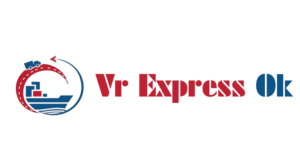In the ever-evolving world of digital marketing, understanding the marketing funnel is crucial for effectively guiding potential customers from their first interaction with your brand to making a purchase. This blog will break down the marketing funnel, exploring each stage and providing strategies to optimize the journey from concept to conversion.
What is the Marketing Funnel?
The marketing funnel is a visual representation of the customer journey, illustrating the steps a potential buyer goes through before making a purchase decision. It typically consists of several stages: Awareness, Interest, Consideration, Intent, Evaluation, and Purchase. Understanding this funnel helps marketers create targeted strategies that address the needs and behaviors of consumers at each stage.
1. Awareness: Attracting Attention
1.1 Creating Brand Awareness
The first stage of the funnel is all about making your target audience aware of your brand. This can be achieved through various channels:
- Content Marketing: Creating valuable content (blogs, videos, infographics) that addresses pain points can attract organic traffic.
- Social Media Marketing: Utilizing platforms like Facebook, Instagram, and LinkedIn to reach a broader audience.
- Paid Advertising: Running ads on social media and search engines can increase visibility and drive traffic.
1.2 Effective Strategies
- SEO: Optimize your website and content for search engines to improve organic visibility.
- Influencer Partnerships: Collaborate with influencers to tap into their audience and gain credibility.
2. Interest: Engaging the Audience
Once awareness is established, the next step is to engage the audience and spark their interest in your offerings.
2.1 Providing Value
At this stage, it’s crucial to provide valuable information that addresses the interests and needs of your audience:
- Email Newsletters: Share informative content that keeps your brand top-of-mind.
- Webinars and Live Events: Host sessions to showcase your expertise and engage directly with potential customers.
2.2 Effective Strategies
- Targeted Content: Create content that speaks to specific interests or demographics within your audience.
- Retargeting Ads: Use retargeting to remind visitors who didn’t convert to come back and explore more.
3. Consideration: Nurturing Potential Customers
During the consideration stage, potential customers are evaluating their options. Your goal is to position your brand as the best solution.
3.1 Building Trust
To nurture leads, you need to establish trust:
- Testimonials and Reviews: Showcase positive customer feedback to reinforce credibility.
- Case Studies: Highlight success stories that demonstrate the value of your products or services.
3.2 Effective Strategies
- Lead Magnets: Offer free resources (e.g., eBooks, templates) in exchange for contact information to build your email list.
- Email Campaigns: Develop targeted email campaigns that address specific needs and offer solutions.
4. Intent: Encouraging Action
At the intent stage, potential customers show a desire to purchase. This is when you should make it easy for them to take the next step.
4.1 Clear Call to Action (CTA)
Ensure that your marketing materials include clear and compelling CTAs that guide users towards making a purchase:
- Limited-Time Offers: Create urgency with time-sensitive promotions.
- Product Demos: Offer trials or demonstrations to showcase the benefits of your products.
4.2 Effective Strategies
- Landing Pages: Design dedicated landing pages that focus on specific offers and include strong CTAs.
- Chat Support: Implement chatbots or live chat features to answer questions and assist customers in real-time.
5. Evaluation: Addressing Concerns
During the evaluation phase, potential customers are weighing the pros and cons of your offerings. It’s crucial to address any concerns they may have.
5.1 Overcoming Objections
- FAQs: Create a comprehensive FAQ section to address common concerns.
- Customer Support: Ensure easy access to customer service for inquiries.
5.2 Effective Strategies
- Comparison Guides: Develop content that compares your offerings with competitors to highlight your advantages.
- Follow-Up Emails: Send personalized follow-up emails to address specific concerns or questions.
6. Purchase: Closing the Deal
The final stage of the funnel is where conversion happens. Here, your goal is to make the purchasing process as seamless as possible.
6.1 Simplifying the Checkout Process
Ensure that your checkout process is user-friendly:
- Multiple Payment Options: Offer various payment methods to accommodate different preferences.
- Guest Checkout: Allow customers to make purchases without creating an account to reduce friction.
6.2 Effective Strategies
- Order Confirmation Emails: Send immediate confirmation emails with order details and expected delivery times to reassure customers.
- Post-Purchase Follow-Up: Engage customers after their purchase to thank them and encourage feedback.
Conclusion
Understanding the marketing funnel is essential for developing effective marketing strategies that guide potential customers from awareness to conversion. By focusing on each stage—Awareness, Interest, Consideration, Intent, Evaluation, and Purchase—you can create targeted campaigns that address the needs of your audience at every step of their journey. As consumer behaviors continue to evolve, adapting your strategies to stay ahead of the curve will be key to achieving lasting success.

